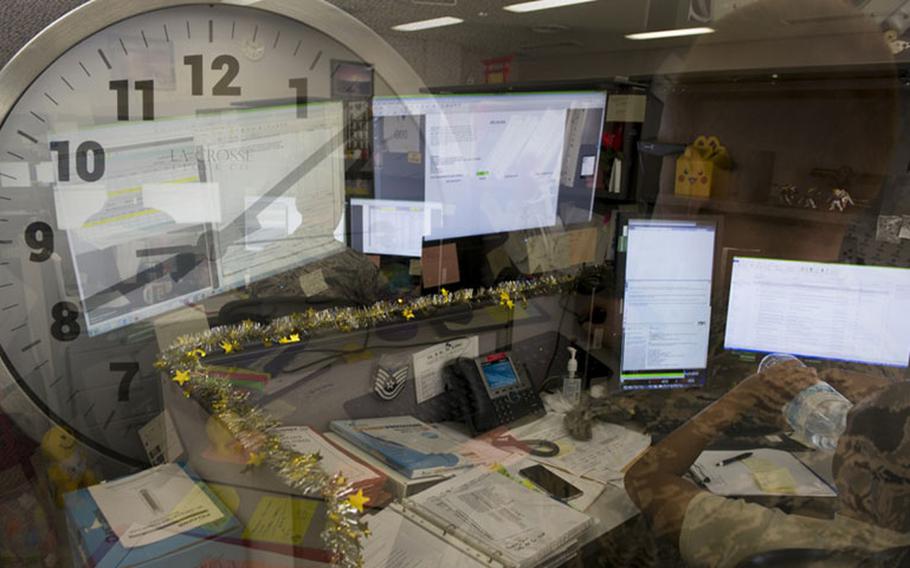Community News
Fiscal Year Close Out – 374th Comptroller Squadron
Stripes Japan September 26, 2017

()
As their fingers speed across the keyboard in a race against the clock, Airmen in the 374th Comptroller Squadron’s financial analysis flight work against time to ensure that Yokota’s budget is balanced to the penny before the end of the fiscal year.
From aircraft parts and fuel to electricity and printer paper, all of the base’s equipment and supplies have to be approved for purchase by Airmen in the financial analysis flight.
“Nothing is free, somebody had to sign a document for that one specific thing to be there for the base,” said Tech Sgt. Justin J. Limos, 374th Comptroller Squadron financial analysist NCOIC of financial analysis. “Someone in our office signed that document to ensure the lights are on at home and mission supplies are there and ready.”
While approving how funds are spent is an ongoing duty throughout the year, it’s the last 30 days of the fiscal year, September 1-30, that cause the financial analysis flight to work overtime. During this last month the finance office must not only ensure the budget for the upcoming year is ready, but also balance the current year’s budget, making sure all the money has been spent in the proper way and everything that was paid for was received.
“This is like our super bowl,” said Capt. Jared T. Abramowicz, 374 CPTS financial analysis flight commander. “Every squadron on base is working together to spend the money we do have to be able to make sure our mission can continue.”
The financial analysis flight works closely with, and relies on the 374th Contracting Squadron to ensure timelines are met during the procurement process of good and services.
According to Limos, balancing the budget and accounting for every penny can be difficult because of the many moving parts between the contracting squadron, squadron resource advisors, reimbursement programs and Pacific Air Forces financial department.
The 374th Airlift Wing’s main budget this year was $101,400,296.69, this is not including other units such as the 730th Airlift Wing and OSI who have their own budgets the 374 CPTS also manage. The responsibility of the 374 CPTS is to ensure all the money is accounted for, was used responsibly and report to PACAF.
“We have to have this money spent by the end of September,” said Abramowicz. “It’s a difficult job due to all the different steps as part of procurement process we have to complete within a very short time line and it’s a team effort between the contractors, resource advisors, financial analysis, all the requirement owners and the commanders across the base.”
This includes all the funding that goes through the base whether its day-to-day military operations and maintenance or military family housing.
“Because this is tax payer’s money we must make sure we are executing it responsibly,” said Limos. “If a unit needed to purchase items X,Y,Z, we need to make sure that they have the money to make the purchase and that they receive the items. We have to ensure money is used the way it was intended.”
While ensuring the base’s budget is balanced is a large job in itself, the 374 CPTS also has to create and approve the budget for the upcoming year and it must be ready to go by Oct. 1, at 12:01 a.m.
The financial analysis office can’t approve payment for the following fiscal year until that fiscal year comes. Because there are so many services that count on getting paid the financial analysis office must work until after midnight on the last day of the fiscal year no matter if it’s a weekend or not, to ensure that money goes where it’s needed in time.
“No money, no mission,” said Limos. “Without the proper supplies we can’t do our mission; all materials have to be funded somehow and that comes from an Airman in the financial analysis office.”